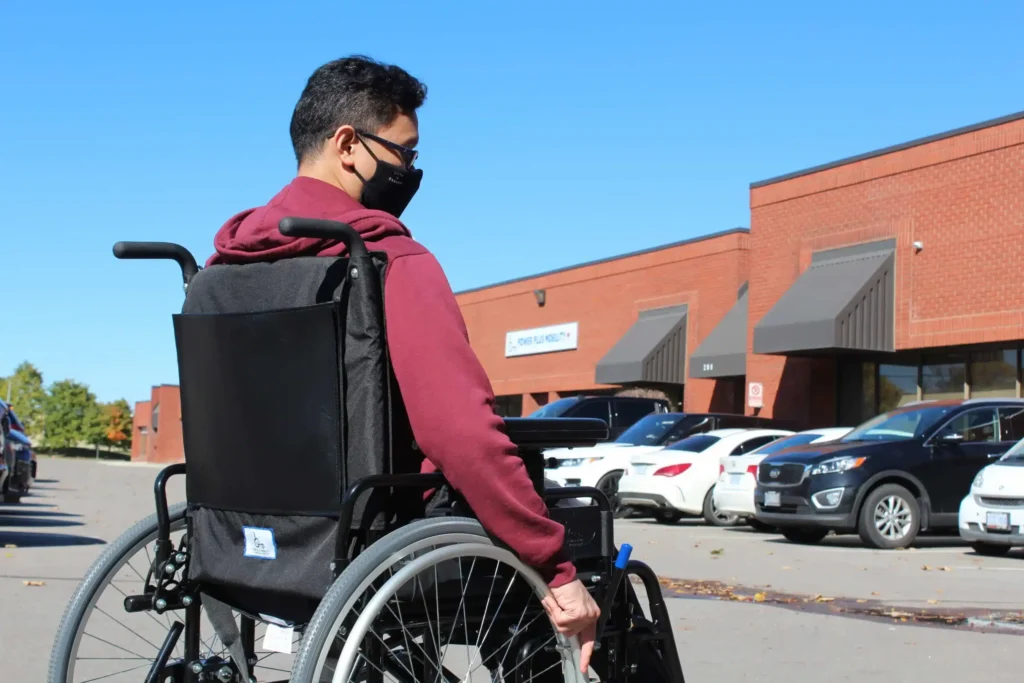
When it comes to purchasing a wheelchair, one of the most important aspects to consider is the warranty. Wheelchair warranties provide assurance that your investment is protected against manufacturing defects or damage, but they’re often complicated and not always as straightforward as they appear. As a consumer, it’s crucial to understand the terms and conditions of a wheelchair warranty to ensure you’re not caught off guard with unexpected costs.
In this article, we’ll break down everything you need to know about wheelchair warranties, including the types of coverage, the fine print, and the hidden details that dealers may not always highlight. With this knowledge, you’ll be better equipped to make an informed decision and safeguard your mobility investment.
1. The Basics of Wheelchair Warranties
A wheelchair warranty is essentially a guarantee from the manufacturer that the wheelchair will function properly for a certain period of time. The terms of this warranty can vary widely depending on the brand, type of wheelchair, and specific model. Generally, wheelchair warranties are divided into two main categories:
- Limited Warranty: This is the most common type and covers only specific parts of the wheelchair, such as the frame, wheels, or mechanical components. It typically excludes wear-and-tear items like cushions, upholstery, and tires.
- Lifetime Warranty: Some manufacturers offer a lifetime warranty on the wheelchair frame, meaning the structure of the chair is covered for as long as you own the chair. However, the definition of “lifetime” can vary, so it’s essential to check for specifics.
Understanding what is covered—and, just as importantly, what is not covered—is essential to prevent unexpected out-of-pocket costs. You can purchase a product with a warranty here.
2. What’s Typically Covered Under a Wheelchair Warranty?
Wheelchair warranties typically cover defects in material or workmanship, ensuring that the wheelchair performs as expected without issues related to the manufacturing process. The following components are usually covered:
- Frame and Structure: The wheelchair frame is often covered under a lifetime or limited warranty, ensuring the core structure is protected against faults like cracks or bending.
- Wheels and Casters: These components are typically covered for a set period, usually around one to three years.
- Mechanical Parts: These may include the footrests, armrests, and wheel locks. For powered wheelchairs, the joystick and battery components are usually covered.
- Other Components: For manual wheelchairs, components like handrims, axles, and brake mechanisms may also be covered for a certain period, typically 1 to 3 years.
It’s essential to read through the warranty carefully to determine the exact terms for each part of the wheelchair.
3. What’s Not Covered by a Wheelchair Warranty?
While warranties provide peace of mind, they don’t cover everything. Common exclusions to be aware of include:
- Wear and Tear: Commonly, items such as tires, cushions, upholstery, footrest pads, and batteries are excluded from the warranty because they degrade with use.
- Accidental Damage: If the wheelchair is damaged due to misuse, accidents, or negligence, the warranty is usually void. Always handle your wheelchair with care to avoid damage that isn’t covered.
- Repairs and Modifications: If you make any modifications or repairs to the wheelchair without authorization from the manufacturer, this can invalidate your warranty.
- Cosmetic Damage: Scratches, dents, and discoloration of the frame or upholstery are typically not covered, as they are considered part of normal use.
Many dealers won’t emphasize these exclusions, so it’s essential to ask for clarification to avoid misunderstandings later.
4. How Long Does a Wheelchair Warranty Last?
The length of a wheelchair warranty varies depending on the manufacturer, type, and model of the wheelchair. Typically, manual wheelchairs have warranties that range from 1 to 5 years, with some high-end models offering extended coverage. For power wheelchairs, warranties tend to be longer due to the more complex nature of the components, with coverage lasting between 2 to 5 years for most parts, and sometimes up to 7 years for the frame.
However, it’s important to know that the warranty period may be different for each component. For example:
- Frame: Typically covered for the longest period (sometimes lifetime).
- Mechanical Parts: Often covered for 1 to 3 years.
- Batteries: Usually have a shorter coverage period, around 6 months to 2 years.
Understanding the specific warranty for each part can help you determine which components may need replacement or repair and when to expect those costs.

5. Common Warranty Pitfalls to Avoid
While wheelchair warranties offer protection, there are several common pitfalls that consumers should watch out for:
- Limited Warranty Coverage: Some warranties only cover parts and labor if the wheelchair is used according to specific guidelines. For instance, many warranties won’t cover damage caused by improper maintenance or failure to follow the manufacturer’s recommended care guidelines.
- Failure to Register the Warranty: Some warranties are only valid if you register the wheelchair within a certain period after purchase. Failure to do so may void or limit your coverage.
- Extended Warranties: Dealers may offer extended warranties for an additional cost. While these can provide extra protection, they may not always be necessary, and the terms can vary widely. Evaluate whether the extended warranty is worth the additional investment based on the coverage it provides.
6. How to File a Warranty Claim
Filing a warranty claim is usually straightforward, but it does involve specific steps to ensure you get the proper coverage:
- Contact the Dealer or Manufacturer: Reach out to the dealership or manufacturer where you purchased the wheelchair. They will usually require details such as the serial number, model, and description of the issue.
- Provide Proof of Purchase: Be ready to provide the original purchase receipt and warranty registration (if applicable).
- Follow the Repair Process: Depending on the issue, you may need to send the wheelchair to an authorized repair center or have a technician visit your location.
- Keep Documentation: Always keep a copy of your warranty documents and any correspondence with the dealer or manufacturer regarding repairs or claims.
By following these steps, you can ensure that your wheelchair is properly repaired or replaced under warranty.
7. How to Maintain Your Wheelchair to Maximize Warranty Protection
While warranties cover defects, regular maintenance can prevent many issues from arising in the first place. By keeping your wheelchair in good condition, you can maximize the benefits of the warranty and prolong the life of the chair. Some essential maintenance tips include:
- Check the Tires and Wheels Regularly: Keep the tires inflated to the correct pressure (for pneumatic tires) and ensure that the wheels are aligned and functioning correctly.
- Clean and Lubricate Moving Parts: Regularly clean the wheelchair frame, and lubricate the moving parts to avoid rust and wear.
- Inspect the Battery (for Power Wheelchairs): Keep the battery charged as instructed, and ensure it’s functioning properly to avoid the need for premature replacement.
- Follow Manufacturer’s Guidelines: Always follow the manufacturer’s care instructions and avoid making unauthorized modifications to ensure the warranty remains valid.
8. What to Do If the Warranty Doesn’t Cover the Issue
If your wheelchair warranty doesn’t cover the issue at hand, you have several options:
- Out-of-Pocket Repair: Depending on the severity of the issue, you may need to pay for repairs yourself. Some dealers or repair shops offer discounted repair services for customers who purchased the wheelchair from them.
- Explore Extended Warranty Options: If your current warranty is about to expire, inquire about purchasing an extended warranty or service plan to provide ongoing protection.
- Consider Replacing the Part: If the damaged part is not covered, it might be cheaper in the long run to replace it yourself rather than paying for repairs.
9. Why Understanding Wheelchair Warranties Is Crucial
Wheelchairs are significant investments, often costing thousands of dollars. Understanding the warranty terms can help you protect that investment and avoid costly repairs or replacements. Knowledge of what’s covered, what’s excluded, and how to properly maintain your wheelchair ensures that your mobility device lasts as long as possible and functions at its best.
Purchasing a wheelchair is an important decision, and the warranty is a key aspect that shouldn’t be overlooked. By understanding the details of your wheelchair warranty, including coverage, exclusions, and maintenance requirements, you can ensure that you’re making a sound investment in your mobility. Always ask the dealer for clear explanations about the warranty and keep track of the terms to ensure that you’re fully protected. Ultimately, the right warranty provides peace of mind and guarantees that your wheelchair remains in top condition for years to come.
To visit our Social Media, please click on Facebook and Instagram


